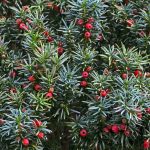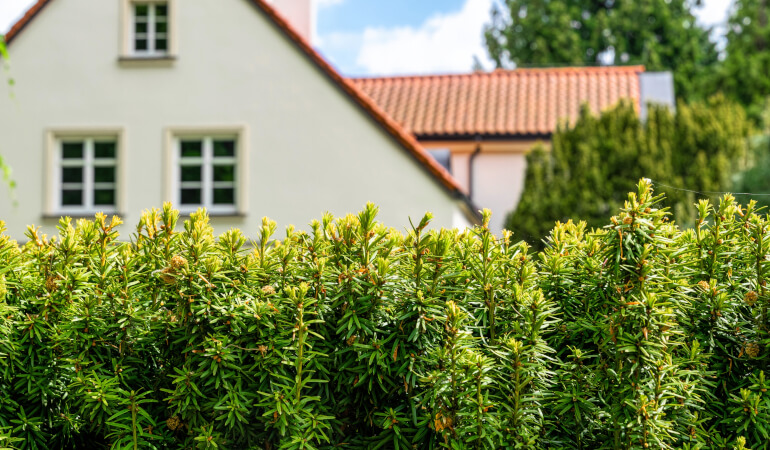
Privacy is highly valued when it comes to our homes. Regardless of whether you reside next to a busy road or in a terraced townhouse, privacy hedges can be highly beneficial for the garden. Hedges are an excellent option for achieving privacy while also providing a favourable environment for wildlife.
For individuals with patience, slow-growing hedge plants like Common Box are a worthwhile investment, as they will create thick evergreen screens. However, for those with time constraints, fast-growing species are a better choice. In this article, we will guide you through the best types of hedges for privacy and the optimal way to use them.
Table of Contents
Leyland Cypress
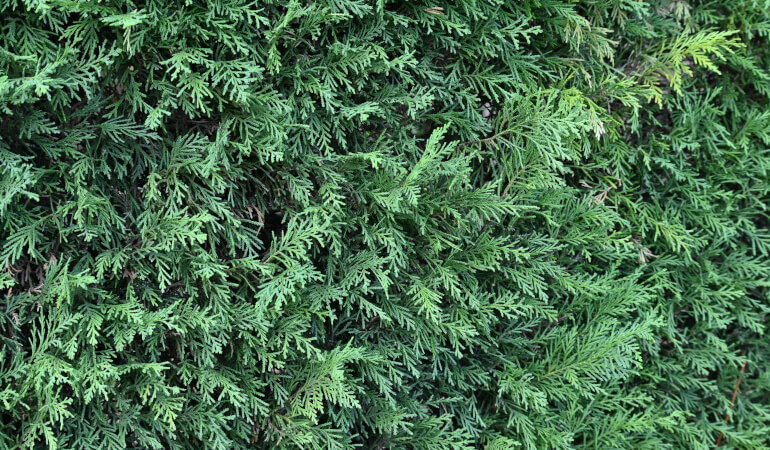
Leylandii hedges have a remarkable growth rate, with the potential to grow between 60 and 90 centimetres per year. This adds them among the fastest-growing privacy hedge species in the UK.
Despite their reputation for causing disputes between neighbours due to their fast growth, with proper pruning, these evergreens can be a valuable addition to any garden. They offer an efficient way to create a screening hedge and excel at filtering out pollution, surpassing other native species. Additionally, they serve as a source of shelter for wildlife.
Need help pruning and shaping your hedges? You can count on a Fantastic Gardener!
Enter your postcode to view our rates and availability in your area.
For questions about the services we offer visit our main site
Deciduous Alder
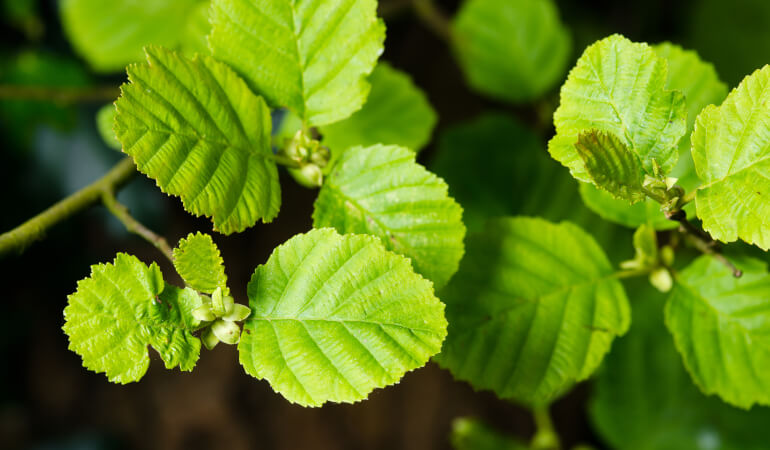
The Deciduous Alder hedge boasts an impressive growth rate of more than 60 centimetres per year. This hedge species is a haven for wildlife, attracting over ninety bird and insect species.
It thrives even in unfavourable environments, such as waterlogged and low-quality soils. During the spring season, the dense, serrated green leaves of the hedge are adorned with long yellow catkins, while small woody cones appear in autumn. It serves as an excellent windbreak or screen to shield other plants from harsh weather conditions.
Privet
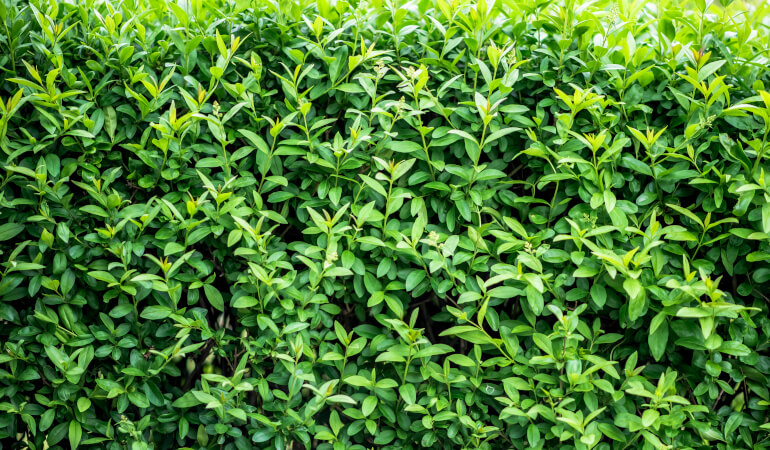
The Privet is an excellent privacy hedge due to its dense and thick foliage. Although it is typically evergreen, it can shed some of its leaves during particularly harsh winters, making it a semi-evergreen species.
Despite only reaching 5 metres, it grows rapidly, with a 60 centimetre growth rate per year. During the summer, it produces white flowers that attract bees and butterflies. This makes it a popular choice for formal hedges around knotty and herb gardens. For a more stylish and colourful option, the variegated variety, Golden Privet, is an excellent alternative.
Hawthorn
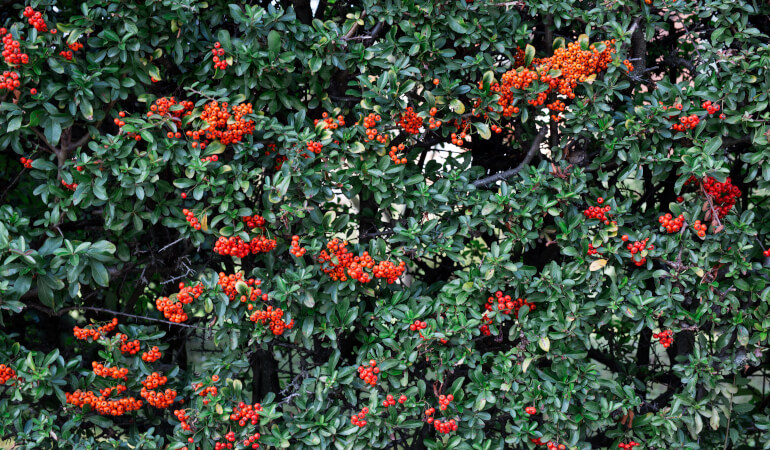
Hawthorn is a fast-growing deciduous plant that supports over 150 species, making it an excellent choice for if you are looking for wildlife-friendly hedge.
In the spring, the hedge produces scented white blossoms, followed by red fruits, also known as haws. These fruits can be used to make jelly and gin or left for birds to enjoy. Hawthorn is incredibly hardy and adapts well to various soil conditions.
However, before pruning your hedge, it’s essential to check for nesting birds, as it is a favoured hedge species for them. With a growth rate of 40 to 60 centimetres per year, Hawthorn is a great option for those seeking a rapidly growing hedge.
Cherry Laurel
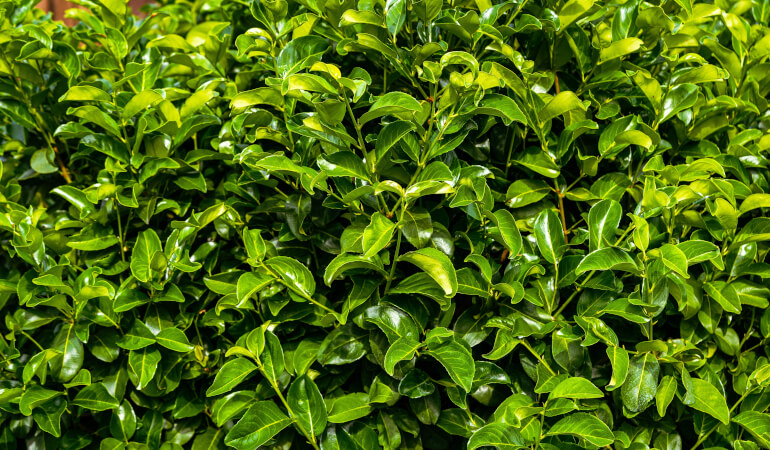
Cherry Laurel is an attractive plant with rich evergreen foliage characterised by its long oval leaves and delicate white flowers that form racemes in the spring. Its dense structure makes it ideal for creating a windbreak or ensuring privacy by quickly screening off sights and sounds from neighbouring gardens.
The low-maintenance plant does not require frequent pruning and attracts pollinators to the garden in the spring. If you are not a fan of conifers, Cherry Laurel is an excellent option. It is the fastest-growing non-conifer hedge with a growth rate of 40 to 60 centimetres per year.
Bay Laurel
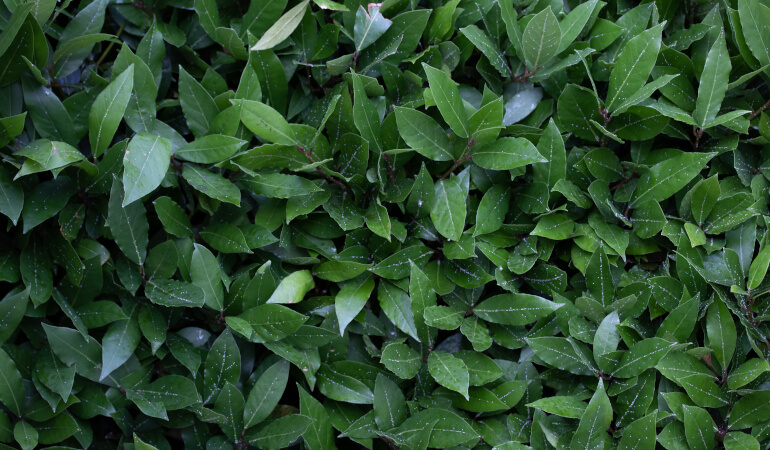
Bay Laurel was highly valued by the Ancient Greeks and associated with Apollo. In fact, the Bay Laurel leaves were used to create wreaths for the victors of the early Olympic Games.
Today, Laurus Nobilis is valued for its attractive appearance and pleasant aroma, often used as a fast-growing privacy hedge.
Although the Bay Laurel’s growth rate is not as rapid as the Cherry Laurel, averaging about 40 cm per year, this can actually be a positive aspect once your hedge is fully established. Being patient during the initial phase of growth means that in a few years, you won’t need to do as much hedge trimming.
Bamboo

Bamboo can be an excellent alternative for those seeking a hedge plant that creates a visual screen without occupying too much space. Golden or fountain bamboo, in particular, can add texture and form to your landscape while creating a screening effect.
However, it is crucial to select a clump-forming bamboo variety, such as fargesia, instead of a runner species, which can quickly spread and overtake not only your garden but your neighbour’s as well. Bamboo’s height and growth rate may vary, with some species reaching up to 6 metres tall. Thus, it’s essential to choose a variety that fits your specific needs.
Berberis
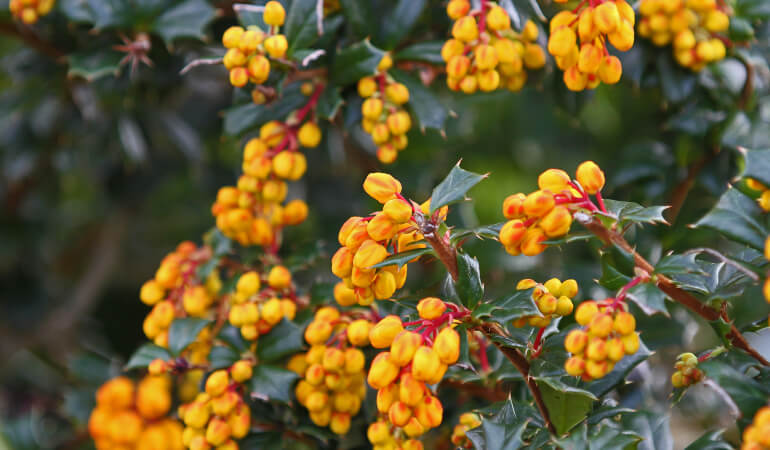
Berberis is a highly versatile hedge plant that blooms with flowers and has a prickly nature that keeps deer and other intruders at bay. The evergreen Darwin’s Berberis is adorned with holly-like leaves, which are exceptionally prickly, and bright orange flowers in the spring.
Julian’s Berberis, also known as Wintergreen, is another evergreen variety with dark green, spiky leaves and yellow flowers in spring. Green Berberis also displays stunning foliage and flowers, but its sharp spines can penetrate leather gloves.
Meanwhile, the Purple Berberis is characterised by magnificent purple-hued leaves that contrast beautifully with its yellow flowers. Berberis grows into a dense, bushy hedge up to 2-3 metres tall.
Beech
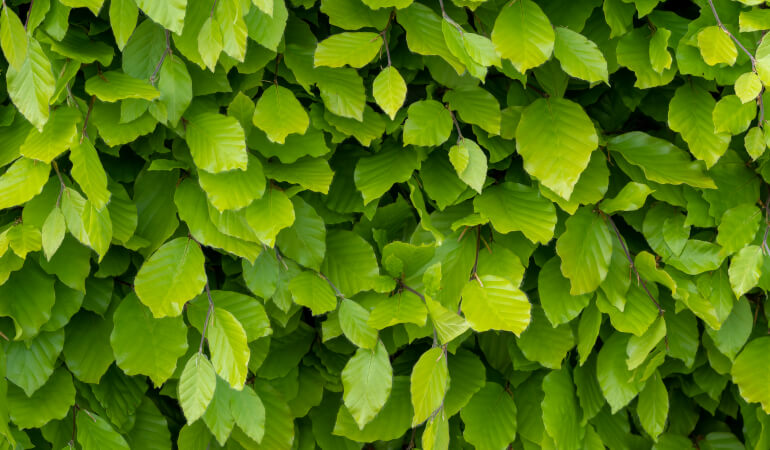
Beech is a popular and timeless choice for hedging. With time it can create a lush, thick hedge even when planted in a single row. Plant it in full sun or partial shade and trim it regularly to appreciate its beautiful foliage as it transforms from vibrant spring green to warm autumnal hues.
Unlike other deciduous hedges, beech retains its dried leaves during the winter months. This gives the privacy of an evergreen hedge with the openness of a deciduous hedge. Consider planting a mix of green and purple beech to create a striking hedge with vivid contrasting colours.
Need a professional gardener to take care of your hedges?
Enter your postcode to view our rates and availability in your area.
For questions about the services we offer visit our main site
How to speed up hedge growth?
It is worth noting that while certain varieties grow faster than others, environmental factors play a significant role when it comes to growing speed.
Hedges that are stressed due to inadequate watering, extreme temperatures, or incorrect exposure to sunlight (either too much or not enough) will develop much slower than the standard growth rates. If you want a hedge to grow quickly, follow the steps below:
1. Choose the right hedge for the right place
For fast-growing shrubs to flourish, it’s crucial to plant them in the appropriate location. If you want full-sun plants to thrive, plant them in a spot receiving full sunlight.
Borderline hardy plants will suffer frost damage every winter. Water-loving plant species are unsuitable for desert climates. To ensure success, conduct thorough research before planting and select a species well-suited to your site. Keep in mind that a plant that tolerates both shade and sun will typically grow faster in sunny locations.
2. Plant your privacy hedge at the right time
Planting a hedge in autumn is ideal, as it allows you to purchase more affordable bare-root hedge plants. If the ground in your area doesn’t freeze too hard during the winter, you can also safely plant fast-growing evergreen trees for privacy during this season.
Alternatively, spring is also a good time for planting. Planting fast-growing shrubs during these times can alleviate your workload and minimise stress on the plants.
3. Water deeply and more frequently the first years
Newly planted hedges require ample watering to establish, so planting them in autumn when there are plenty of rainfalls could be an advantage.
If your region experiences a rainfall deficit, you will need to deeply water your hedge plants once or twice a week. You should continue this practice for one or two years. After this period, your hedge’s root system should be well-established and watering could be done during prolonged dry spells.
4. Don’t forget to fertilise
Incorporating compost into the planting hole is advisable when establishing your hedge. Additionally, mulching around new plants with bark chips or manure is beneficial. This practice provides a nutrient boost and suppresses weed growth. To promote optimal growth, you can supplement these nutrients each spring by applying a slow-release fertiliser rich in nitrogen.
5. Timing is everything when it comes to pruning
Although it may seem counterintuitive to trim a hedge that you wish to grow as tall as possible, doing so can greatly benefit the plant’s health. The right time for pruning is typically in the spring. This encourages new growth and prevents any tender shoots from freezing if they emerge too close to winter. Regular pruning of fast-growing hedges can create a lush and compact hedge.
If you’re planning to plant a privacy hedge along a shared border, it’s a wise idea to have a friendly conversation with your neighbour before you start. It’s important to note that tall, dense hedges can obstruct natural light, which may concern your neighbour. To address this, assure them that you will maintain the hedge at a reasonable height in the coming years.
Takeaways
- Growing speed is heavily influenced by environmental factors.
- The appropriate time to plant a hedge is in autumn when bare-root hedge plants are more affordable.
- The establishment of newly planted hedges requires ample watering.
- Spring is typically the best time for pruning.


